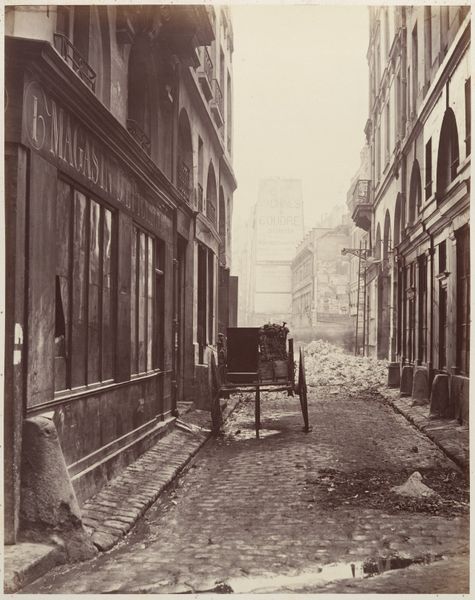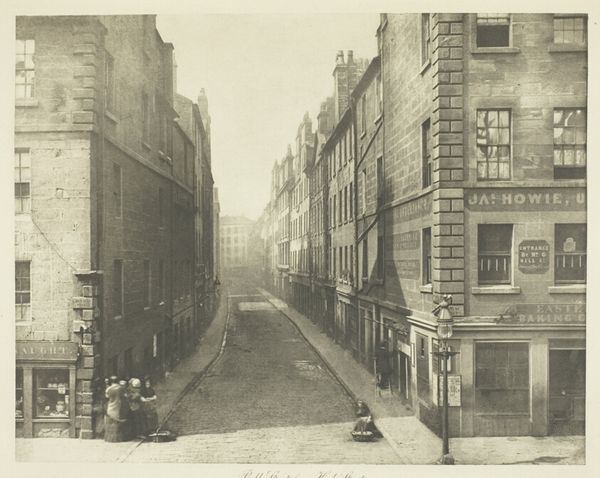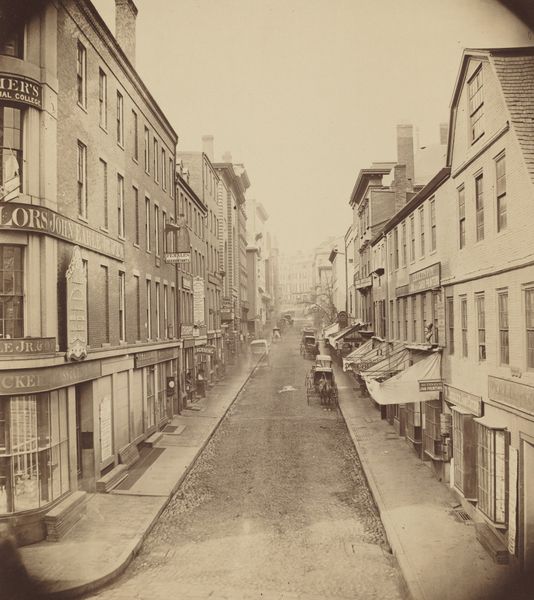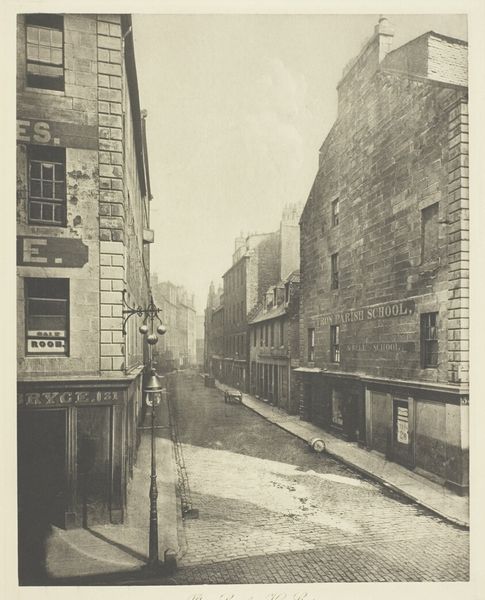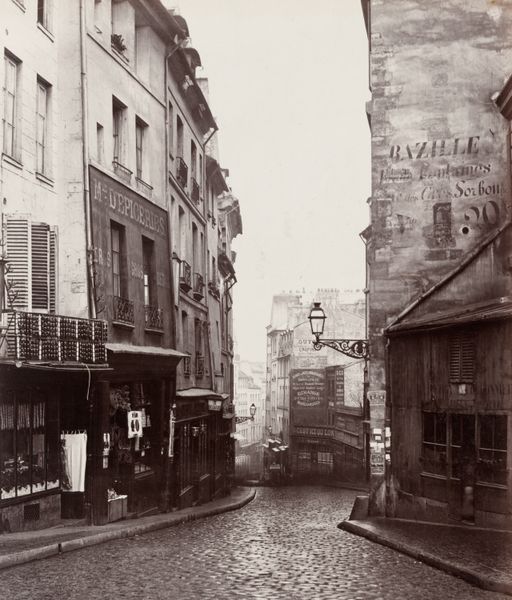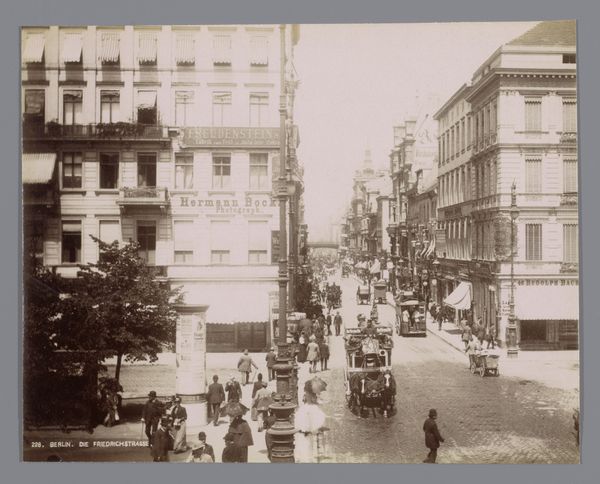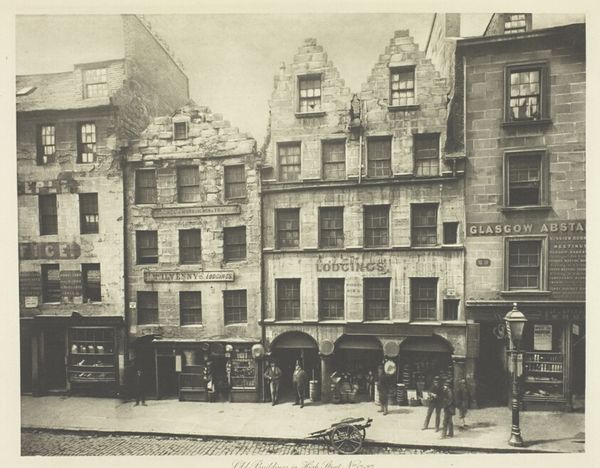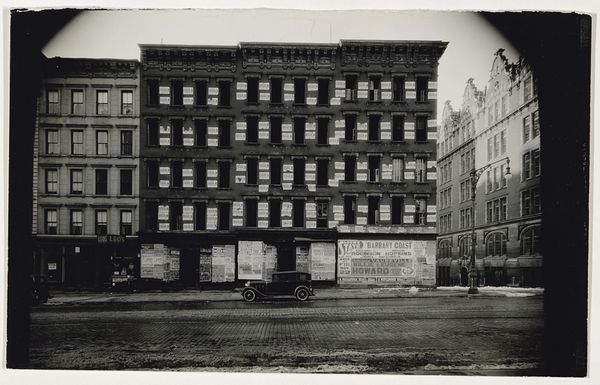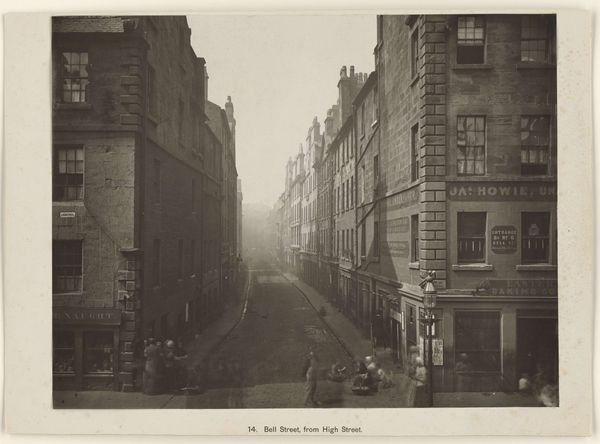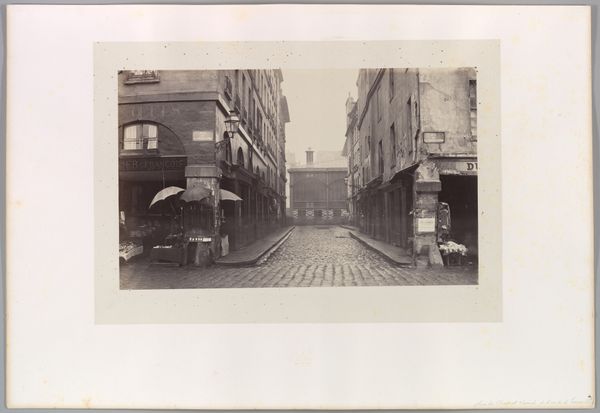
photography
#
urban landscape
#
building study
#
16_19th-century
#
street view
#
street shot
#
street lighting
#
urban cityscape
#
historic architecture
#
street-photography
#
photography
#
city scape
#
street photography
#
cityscape
#
realism
#
historical building
Dimensions: image/sheet: 30.6 × 27 cm (12 1/16 × 10 5/8 in.) mount: 60 × 42.6 cm (23 5/8 × 16 3/4 in.)
Copyright: National Gallery of Art: CC0 1.0
Editor: This is Charles Marville's "Rue Saint-Jacques," a photograph taken before 1867. It's such a narrow street, almost claustrophobic, with tall buildings on either side completely covered in advertisements and signs. What's your take on it? Curator: I see this as a potent visual document of Paris undergoing dramatic transformation. Marville was, in a sense, documenting the “before.” Consider the political context: Haussmann's urban renewal projects were drastically reshaping the city, displacing entire communities. Editor: So, this isn't just a pretty picture? Curator: Not at all. Look at the street itself. The narrowness, the almost suffocating presence of the buildings – these details reveal the texture of a pre-Haussmann Paris that was rapidly disappearing. Those advertisements clinging to the buildings aren’t just background noise, they’re part of the urban fabric, speaking to the economic life and the marketing strategies of the time. Editor: You’re saying it shows how businesses tried to catch people’s attention? Curator: Precisely. Photography like this plays a crucial public role, preserving evidence of social and cultural shifts. What do you notice about the way light is used here? How does it affect your perception of the scene? Editor: It's interesting. It’s bright at the end of the street, drawing your eye in, but the immediate foreground is quite dark. Curator: Exactly! It might be said that the photography also obscures things at a distance. I think what it highlights, in part, is that Marville’s work is politically charged in preserving visual evidence. Editor: That is true. It gives this image a whole new meaning, more than just being aesthetically pleasing. Curator: Yes, and helps us reflect on our roles in shaping cultural landscapes.
Comments
No comments
Be the first to comment and join the conversation on the ultimate creative platform.



